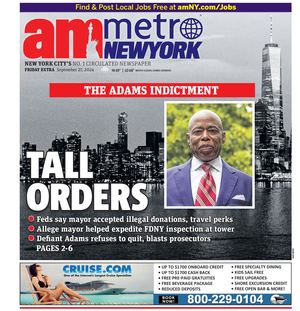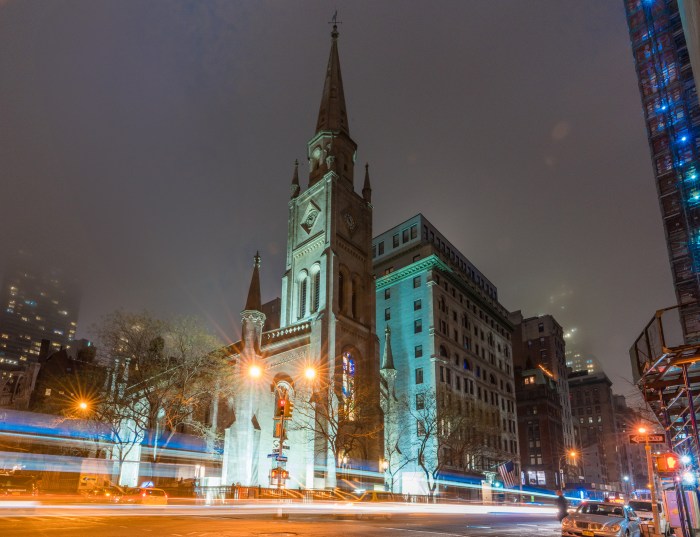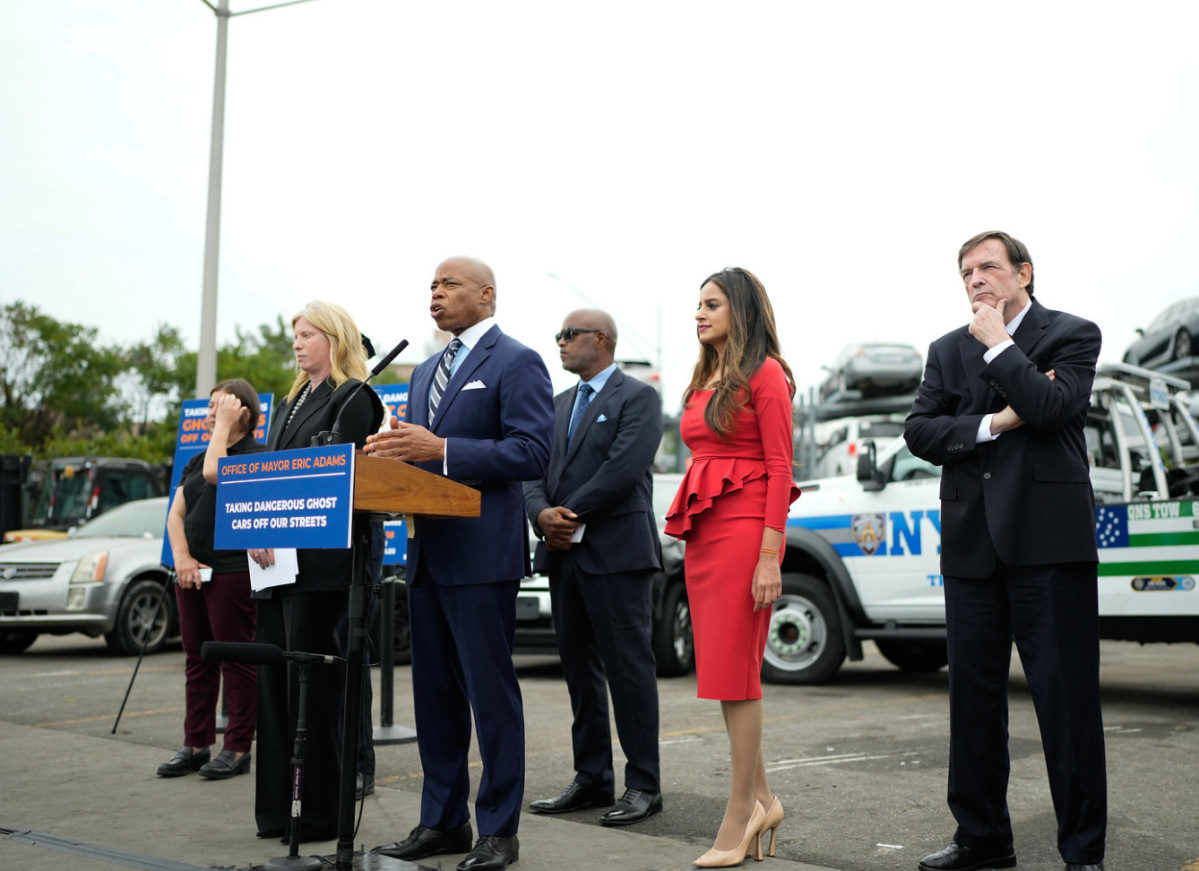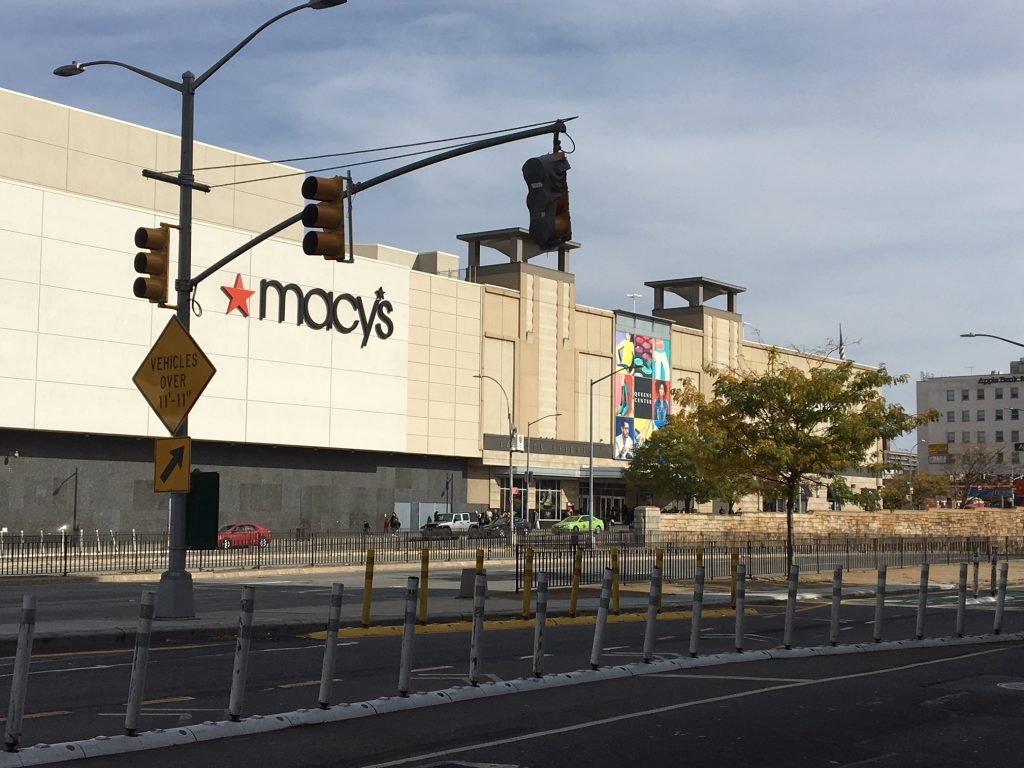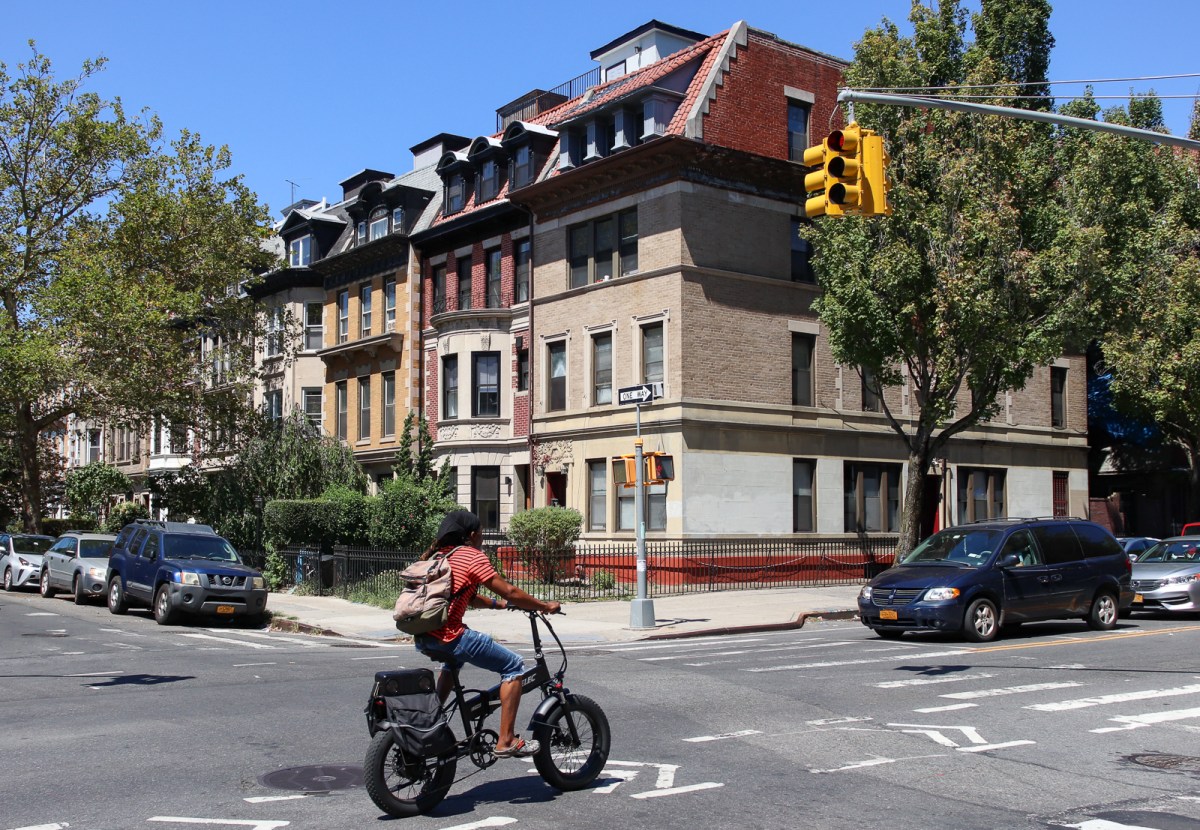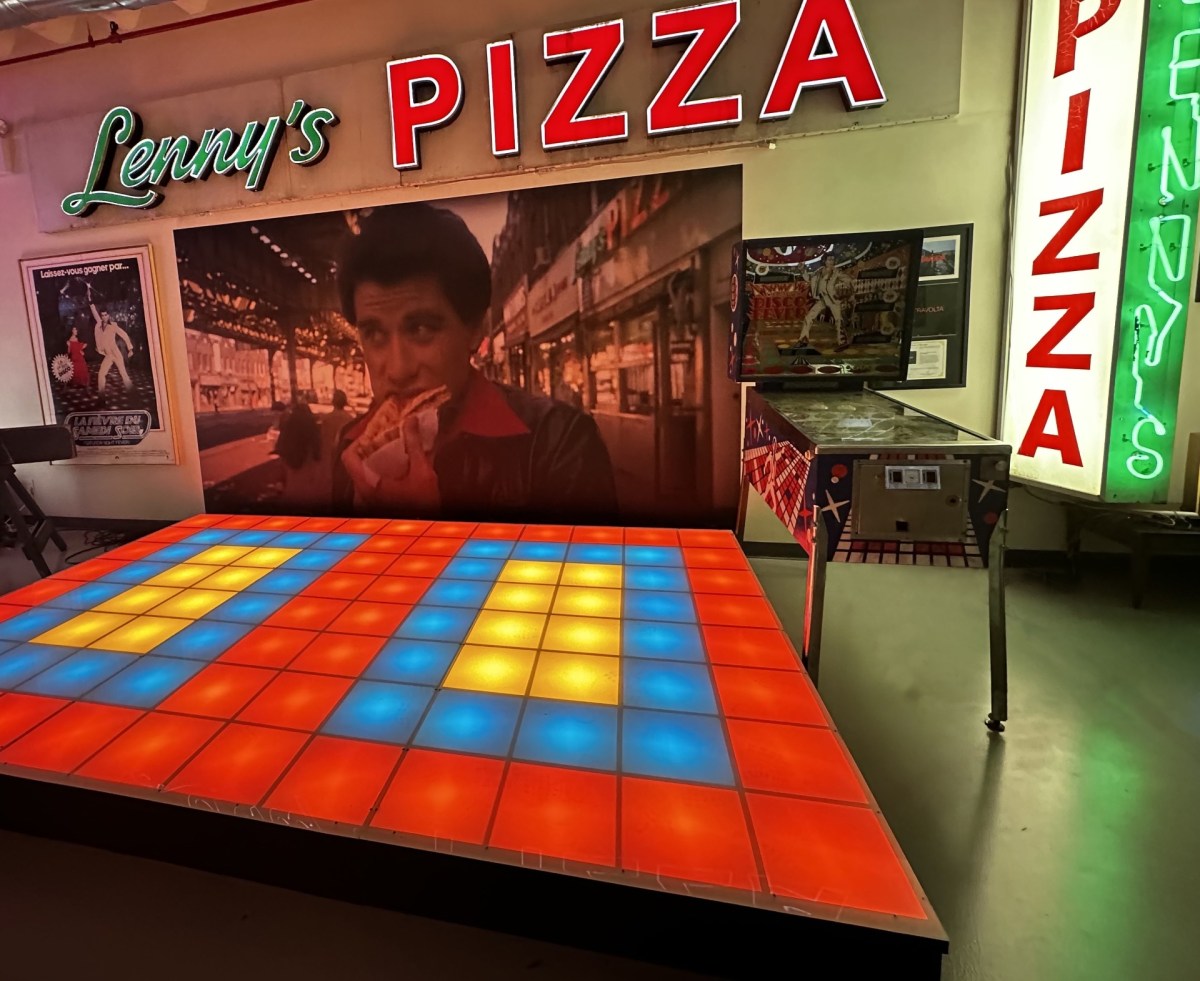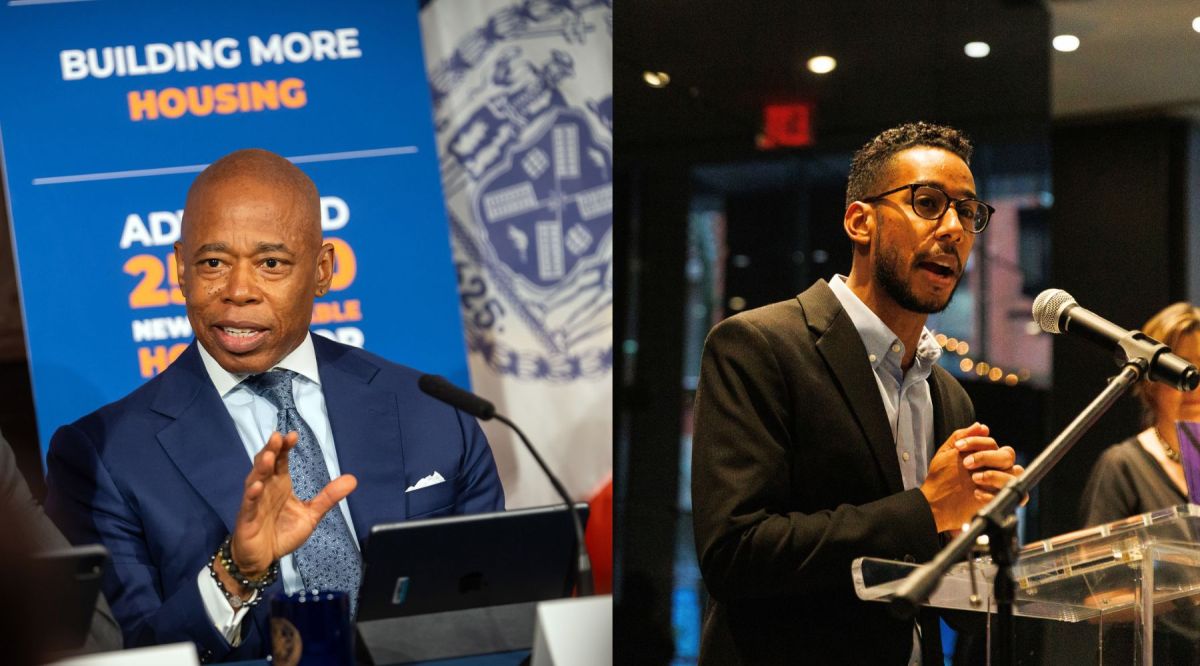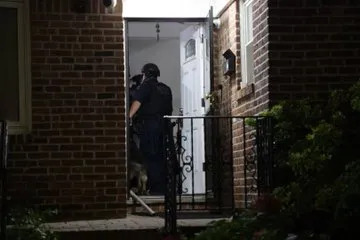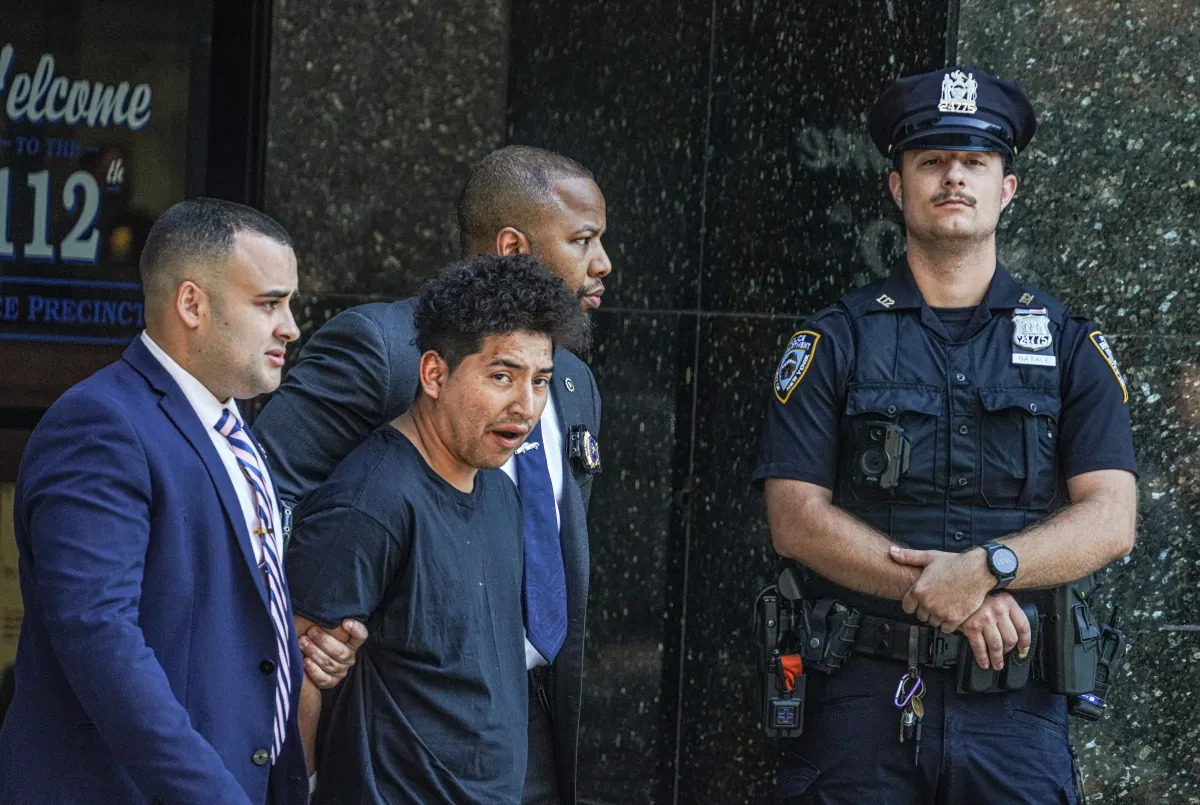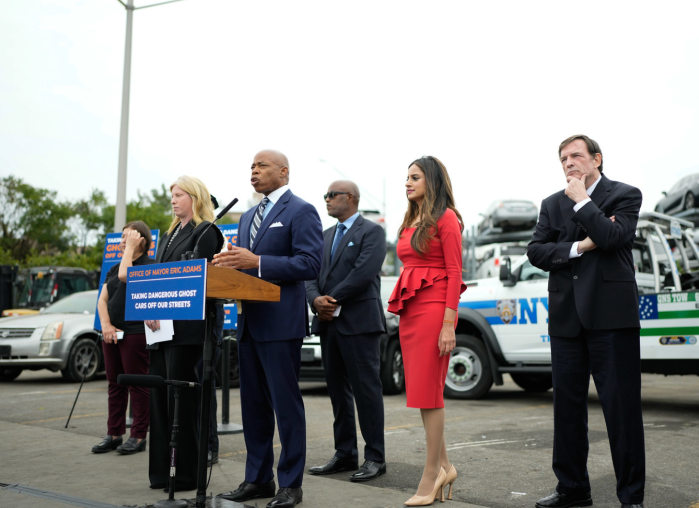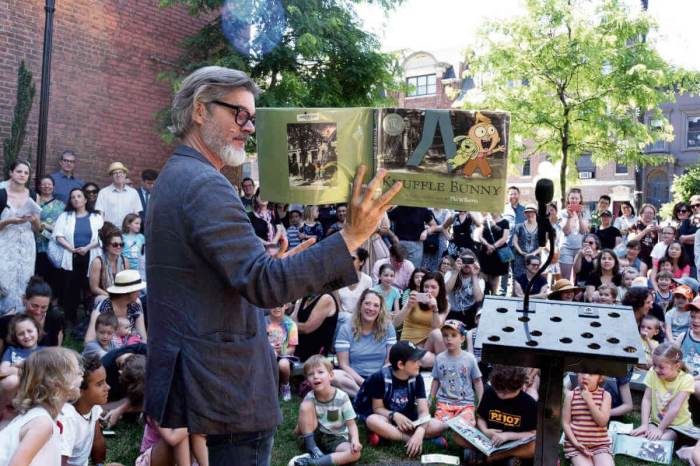By Lincoln Anderson
Less than two weeks after New York University made a major presentation of concept plans for developing new space on its two South Village superblocks, the iconic Silver Towers, located on the southern superblock, have been calendared for a landmark designation hearing.
Andrew Berman, director of the Greenwich Village Society for Historic Preservation, said if Silver Towers is landmarked it could seriously limit the university’s ability to develop new buildings on the superblock’s open spaces.
On Tuesday, the Landmarks Preservation Commission did calendar a public hearing for the 1966 I.M. Pei-designed complex, but did not set a date.
In its “statement of significance,” the L.P.C. staff wrote: “Silver Towers/University Village is significant as an important early work by the internationally famous architectural firm of I.M. Pei, as an important example of a modern concrete complex and for its association with Robert Moses and New York University.”
N.Y.U. built the complex on 5 acres of an urban-renewal area that planning czar Moses originally envisioned as covering 40 acres between W. Fourth St., Mercer St., Sixth Ave. and Spring St.
When G.V.S.H.P. first proposed landmarking Silver Towers three years ago, N.Y.U. strongly opposed the idea of designating the towers — located between Bleecker and Houston Sts. east of LaGuardia Pl. — as well as the rest of the superblock.
Particularly at issue was the society’s push for the Morton Williams supermarket, at the corner of Bleecker St. and LaGuardia Pl., and Coles Sports Center, along Mercer St., both relatively low-rise buildings, to be included in the landmark designation. N.Y.U. purchased the supermarket for $24 million in 2000 with a clear intention of building on it.
G.V.S.H.P. had argued for including the gym and market in the designation as so-called noncontributing structures, meaning changes could be made on these properties as long as they didn’t “negatively impact upon [Silver Towers’] overall design scheme and the relationship of the main structures.”
“We oppose the proposal,” John Beckman, N.Y.U.’s spokesperson, told The Villager in March 2004. “The designation of this entire block as a landmark would not seem to be architecturally defensible. Given that reality, one is left to wonder what the real motivation is for trying to employ the landmarking process. If there are people out there who want to argue for the architectural elegance of the Morton Williams supermarket, they should do so. But many people may wonder at the application of the landmarks process to such a structure.”
But the university has since had a change of heart under President John Sexton and now backs landmarking Silver Towers. Two weeks ago, Sexton signed an agreement with Borough President Scott Stringer, pledging to follow a new set of more community-friendly development principles. N.Y.U.’s turnaround on the Silver Towers issue is part of this “new N.Y.U.,” the university says. Plus, the supermarket is no longer part of the proposed landmark site that L.P.C.’s commissioners will consider next month.
In a statement released Monday, Sexton said, “The planning principles on which we collaborated with local elected officials and community groups are the standards to which we expect to be held. We believe this step [supporting the Silver Towers designation] is an important one that demonstrates our respect for the ‘ecosystem’ in which our university exists. Both we and our partners took a major step in developing a relationship of trust last week; we think the action we are announcing today makes real our intention to continue building that trust.”
The three Pei-designed buildings include the two Silver Towers buildings and 505 LaGuardia Pl., a Mitchell-Lama co-op. N.Y.U. owns the entire property. The two Silver Towers buildings principally house N.Y.U. faculty. The university ground leases the third tower to the 505 LaGuardia co-operative corporation.
According to N.Y.U., its support for landmarking Silver Towers is consistent with two of the planning principles that emerged from Stringer’s N.Y.U. Task Force meetings: employing a publicly oriented review process on an N.Y.U. project and sustaining the neighborhood’s character.
Berman, not forgetting N.Y.U.’s prior opposition to the landmarking proposal, was glad at the university’s about-face, though not exactly brimming with praise.
“N.Y.U. is trying to project a community-friendly image, but this is going to happen regardless,” he said of Silver Towers’ landmarking. “We know that the supermarket and Coles gym will not be in the landmarking proposal; the Landmarks Preservation Commission told us pretty early on that they were not part of the original Pei-Cobb-Freed design.”
Berman added that the perennially in-limbo Department of Transportation-owned strips along LaGuardia Pl. and Mercer and Bleecker Sts. are also likely not part of the proposal. These strips were left over from street-widening projects decades ago.
“But,” Berman said, “we are pretty optimistic that substantial portions of the open space and the green space that were part of the Pei design will be in the proposed landmarking. I think what that means is those areas will be pretty safe from development. I’m fairly confident that the plaza where the Picasso sculpture [“Portrait of Sylvette,” by Carl Nesjar] is will be in there. And I think that in adjacent areas, sensitivity to this recognized historic resource will be a must.”
Berman said “The Pinwheel” — one of the concept plans for development around the Silver Towers presented at N.Y.U.’s planning open house two weeks ago — “might be impossible” if the landmarking is approved because it might be in the landmarked area’s boundaries. “The Pinwheel” scenario calls for a tall tower to be added east of the Morton Williams site, as opposed to directly on the supermarket location.
“I think it would be extremely, extremely hard to argue that you could insert a new building into that green space if the designation is made,” he said.
If the tower complex is landmarked and N.Y.U. decides to develop on the supermarket property, Berman said, whatever is done would have to be “respectful and deferential” of the landmarked complex — meaning any new buildings would have to be “horizontal and low.”
Doris Diether, a member of Community Board 2’s Landmarks Committee, said that at last weeks’ committee meeting, N.Y.U. engineers said that while all the superblock’s residential development rights have been used up, the university could still use the community facilities zoning allowance to add more space.
But Diether thinks there are no development rights left on N.Y.U.’s southern superblock.
“They used them up,” she asserted.
But Berman begged to differ, saying, “It’s probably used up on the residential. But there’s a tremendous amount of development rights that they have on those superblocks if they exploit the community facility bulk bonus. There’s about a 90 percent increase there for F.A.R. [floor-area ratio, a formula governing building size],” he said, when compared to the residential F.A.R.
N.Y.U. spokesperson Beckman downplayed the impact landmarking might have on the university’s future development plans on the superblock.
“The planning team was always aware of the special nature of the Silver Towers complex regardless of the landmarking designation, and the planning was done accordingly,” Beckman said. “If the Silver Towers site is landmarked, it would mean that there will be another step in the process for some of the plans, as they would have to go through a public review process with the L.P.C. Such a review is entirely consistent with the planning principles we agreed to the week before last.”
